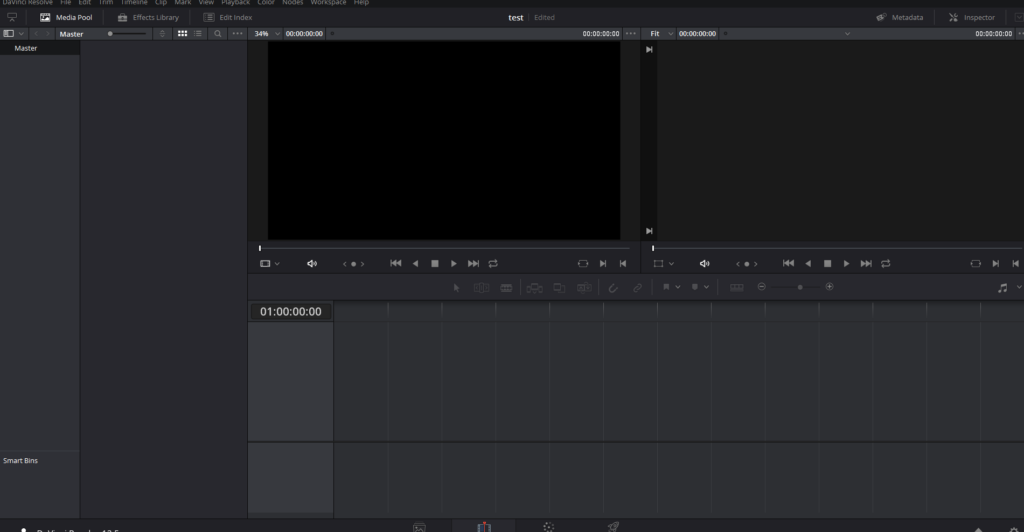Mastering the Timeline Viewer: A Comprehensive Guide to Efficient Editing in DaVinci Resolve

Introduction: The timeline viewer is the heart of the editing process in DaVinci Resolve, providing editors with a comprehensive view of their project timeline and enabling them to navigate, review, and manipulate their footage with precision and efficiency. Understanding how to effectively use the timeline viewer is essential for maximizing productivity and achieving professional results in your edits. In this extensive guide, we delve into the intricacies of using the timeline viewer in DaVinci Resolve, providing step-by-step tutorials, expert tips, and real-world examples to help you master this essential aspect of the editing workflow.
Section 1: Understanding the Timeline Viewer Before diving into the specifics of using the timeline viewer in DaVinci Resolve, it’s essential to understand its purpose, layout, and functionality. This section provides an overview of the timeline viewer, including its components, navigation tools, and creative applications in video editing.
- Defining the timeline viewer: Explore the concept of the timeline viewer, which provides a visual representation of your project timeline and allows you to view and manipulate your footage with precision. Understand how the timeline viewer serves as the primary workspace for editing, organizing, and arranging your video clips.
- Layout and components: Familiarize yourself with the layout and components of the timeline viewer in DaVinci Resolve. Learn about the timeline panel, which displays your project timeline, as well as the various controls, buttons, and indicators that allow you to navigate, review, and edit your footage.
- Navigation tools: Discover the navigation tools and shortcuts available in the timeline viewer, allowing you to navigate through your project timeline quickly and efficiently. Learn how to scroll, zoom, and navigate between clips, markers, and keyframes with ease, and explore techniques for customizing your workspace to suit your editing preferences.
Section 2: Basic Functions of the Timeline Viewer The timeline viewer in DaVinci Resolve offers a range of basic functions for reviewing, organizing, and manipulating your footage. This section provides step-by-step tutorials and demonstrations for using the timeline viewer to perform essential editing tasks.
- Viewing and selecting clips: Learn how to view and select clips in the timeline viewer, allowing you to review your footage and identify key moments for editing. Explore techniques for navigating between clips, selecting multiple clips, and using keyboard shortcuts to speed up your workflow.
- Arranging clips: Discover how to arrange clips in the timeline viewer to create your desired edit sequence. Learn how to drag and drop clips, trim clip boundaries, and rearrange clips within the timeline to achieve the desired pacing and rhythm in your edits.
- Adding and editing transitions: Explore techniques for adding and editing transitions between clips in the timeline viewer to create seamless transitions and smooth visual flow in your edits. Learn how to apply cross dissolves, wipes, and other transition effects, adjust transition duration and timing, and customize transition properties to achieve the desired visual impact.
Section 3: Advanced Functions and Techniques Beyond basic editing tasks, the timeline viewer in DaVinci Resolve offers advanced functions and techniques for creating intricate edits and refining your footage. This section delves into advanced functions and techniques of the timeline viewer.
- Using markers and annotations: Master the art of using markers and annotations in the timeline viewer to mark important moments, add comments, and communicate with collaborators. Learn how to add markers, navigate between markers, and use annotations to provide context and feedback for your edits.
- Working with audio: Explore techniques for working with audio in the timeline viewer, allowing you to adjust audio levels, add audio effects, and synchronize audio tracks with your video edits. Learn how to trim audio clips, adjust volume levels, and use keyframes to create dynamic audio mixes that complement your edits.
- Collaborative editing: Discover how to collaborate with other editors and collaborators using the timeline viewer in DaVinci Resolve. Learn about collaboration features such as timeline sharing, versioning, and real-time collaboration, allowing multiple users to work together on the same project simultaneously.
Section 4: Real-World Applications and Case Studies Gain inspiration and insight from real-world examples and case studies that demonstrate the creative potential and practical applications of the timeline viewer in DaVinci Resolve. This section showcases innovative editing techniques employed in diverse contexts, from narrative films and documentaries to commercials and music videos.
- Narrative filmmaking: Explore how filmmakers use the timeline viewer in DaVinci Resolve to create dynamic edits and refine the pacing and rhythm of their films. Discover techniques for organizing footage, arranging clips, and adding transitions to create compelling narratives that engage and captivate audiences.
- Documentaries: Experience the versatility of the timeline viewer in documentary filmmaking, where it allows editors to assemble complex narratives and convey information with clarity and precision. Learn how to use markers, annotations, and audio tools to create informative and engaging documentaries that inform and inspire viewers.
- Music videos: Discover how the timeline viewer can be used to create dynamic and visually captivating edits in music videos. Explore techniques for syncing footage to music beats, arranging clips to create rhythm and flow, and using transitions and effects to enhance the visual impact of your edits.
Section 5: Conclusion The timeline viewer in DaVinci Resolve represents a powerful and indispensable tool for video editors, providing a comprehensive workspace for organizing, reviewing, and manipulating footage with precision and efficiency. By mastering the techniques and principles outlined in this guide, you can unlock a world of creative possibilities and elevate your editing prowess to new heights of excellence. Embrace the creative potential of the timeline viewer, and let DaVinci Resolve be your canvas for bringing your vision to life with precision, finesse, and impact.







